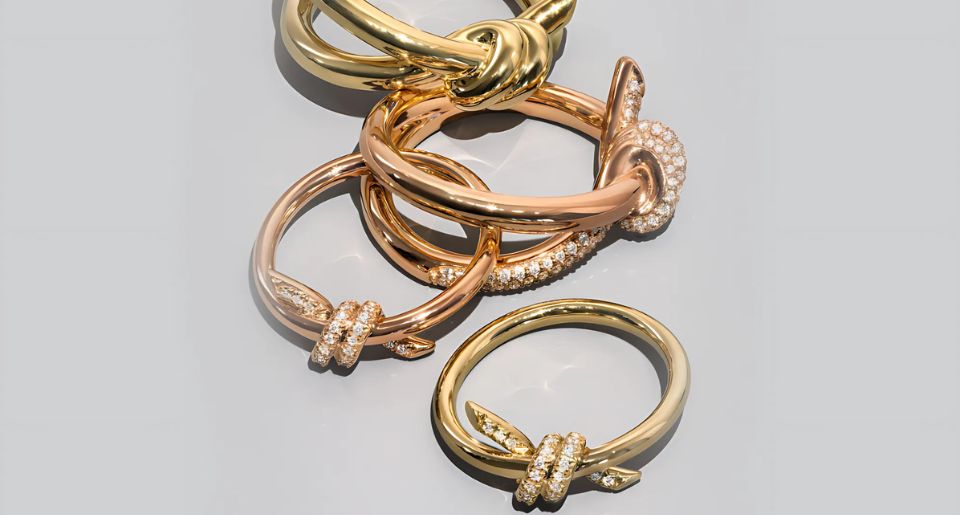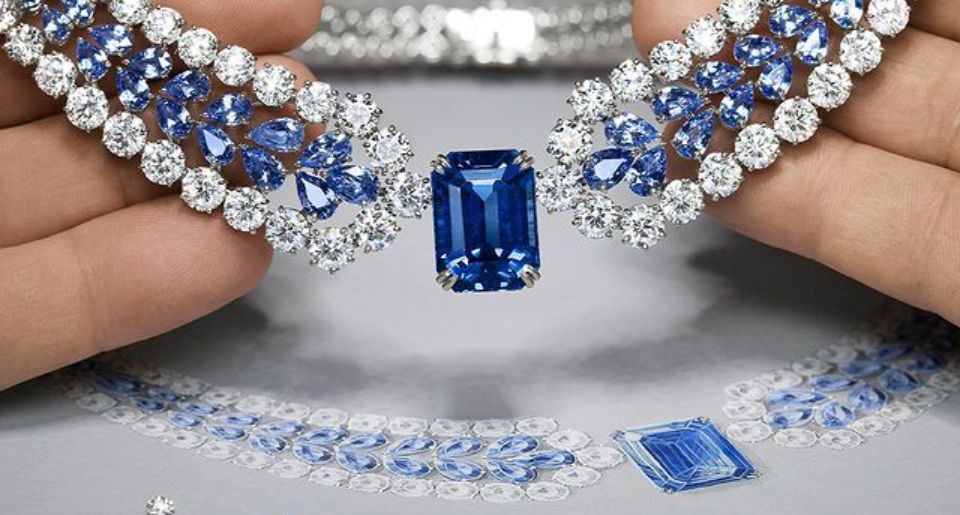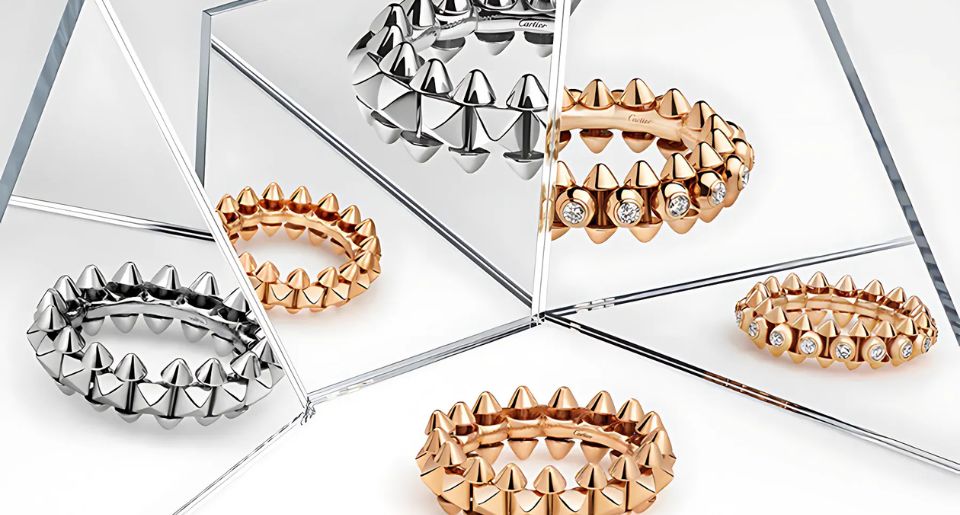Image credit: The Guardian
Contents
- When Chanel Dared to Mix Bijoux
- Provoking Desires? Not What Chanel's Jewelry Is About
- Coco and Her Pearls—Is There Something More Heavenly?
- The Chanel-Duke Legendary Alliance
- How Did a "Dressmaker" Revolutionize High Jewelry?
- Chanel’s Post-War Revival
- Jewelry for All, Exclusivity for None
- About The Writer
Coco Chanel is a big name for perfumes and haute couture, but her influence on jewelry design is just as legendary.
Her signature style exuded simplicity, elegance, and understated luxury—a philosophy she extended to her unique jewelry pieces. She believed in the power of costume jewelry to beautify rather than flaunt wealth, famously stating,
"Costume jewelry is not made to give women an aura of wealth, but to make them beautiful"
But Chanel, if jewelry wasn’t meant to show off wealth, how did you rock layers of dazzling, lavish creations in every photo? A little sparkle never hurt anyone, right?
When Chanel Dared to Mix Bijoux
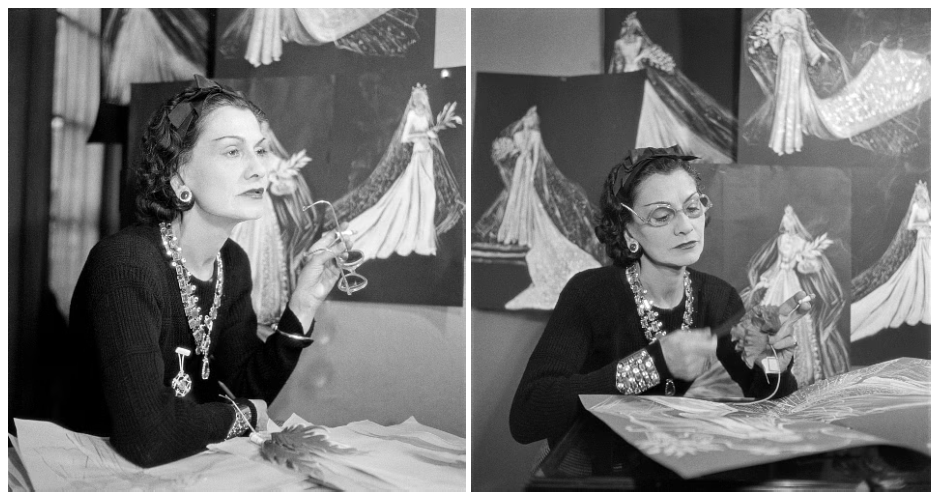
Images credit: Female
The 1920s saw the arrival of Chanel’s original bijoux designs in stores, marking a historic turning point that made costume jewelry a must-have statement.
Chanel's jewelry reflects Gabrielle "Coco" Chanel's rebellious spirit, completely reshaping the traditional views on accessorizing with her inventive and playful approach. She challenged conventional expectations by mixing authentic jewelry with costume pieces, blurring the lines between real and faux.
Mixing high-end and affordable pieces is not uncommon today, yet when Chanel first launched her costume jewelry line, it was a groundbreaking act—and deservedly so.
Historically, only the affluent could indulge in fine jewelry, while women from middle and lower-income brackets settled for mass-produced imitations. These replicas were often deemed subpar, worn only by those who couldn't splurge on “real” pieces.
Coco Chanel championed a “jewelry for all” mindset during a time when such ideas were often met with disapproval. Her fearless and admirable approach reflects her rebellious vision, as she famously said, “My jewels represent an idea, first and foremost!.”
Provoking Desires? Not What Chanel's Jewelry Is About

Images credit: British Vogue
Bold, ambitious, and ahead of her time, Coco Chanel was a pioneer who used her charisma to rise from humble beginnings to incredible success in the jewelry world. Her fine jewelry collection (often gifted by admirers) matched her signature style perfectly.
This brilliant pairing highlighted Chanel’s knack for blending sophistication with everyday chic, setting a lasting trend admired by her generation and today’s fashion icons alike.
Chanel's magnetic appeal comes from the simplicity and sophistication she always embraced. The brand's visionary founder insisted, “Simplicity is the keynote of all true elegance.” This philosophy resonates throughout Chanel's collections, which showcase clean, streamlined designs that highlight the beauty of understated elegance.
But while Chanel's ready-to-wear line is famous for its subtle elegance, her jewelry box was the complete opposite—bold, lavish, and unapologetically flashy. Coco indulged in eye-catching, complex bijoux designs with stones, faux pearls, and precious metals such as vermeil and bronze.
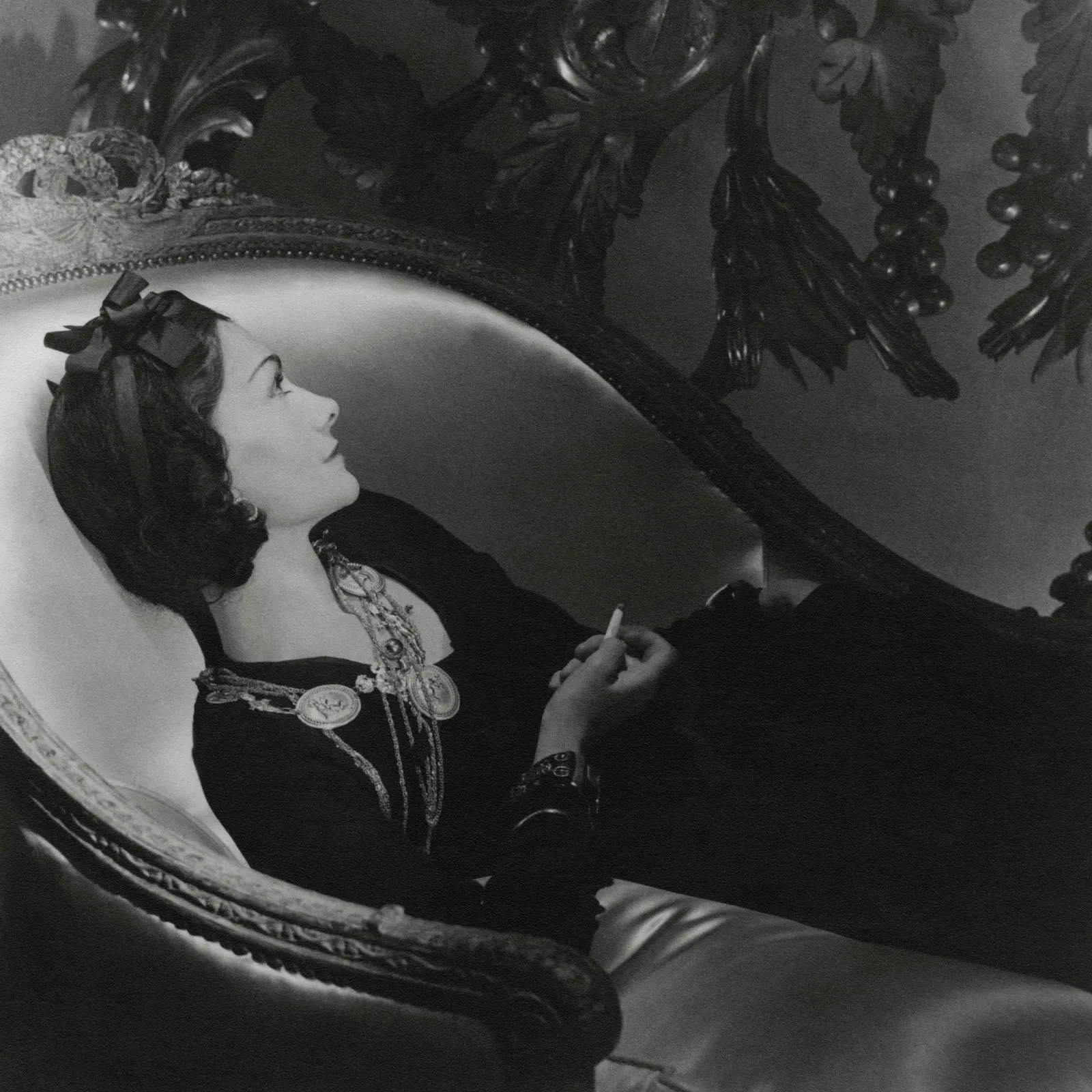
Image credit: British Vogue
Drawing inspiration from her bohemian friends, Chanel adorned herself with many elaborate bijoux, embracing the boho jewelry style known for its free-spirited vibe. True to its origins, it breaks away from mainstream fashion, offering a unique style experience that Chanel admired.
Chanel adored experimenting with her jewelry, guided by the belief that:
"Costume jewelry isn’t made to provoke desire, just astonishment at most. It must remain an ornament and an amusement."
With Chanel's signature style of mixing real with faux jewelry, who can definitively say whether the dazzling pieces in her photos were genuine? It leaves you wondering.
Coco and Her Pearls—Is There Something More Heavenly?
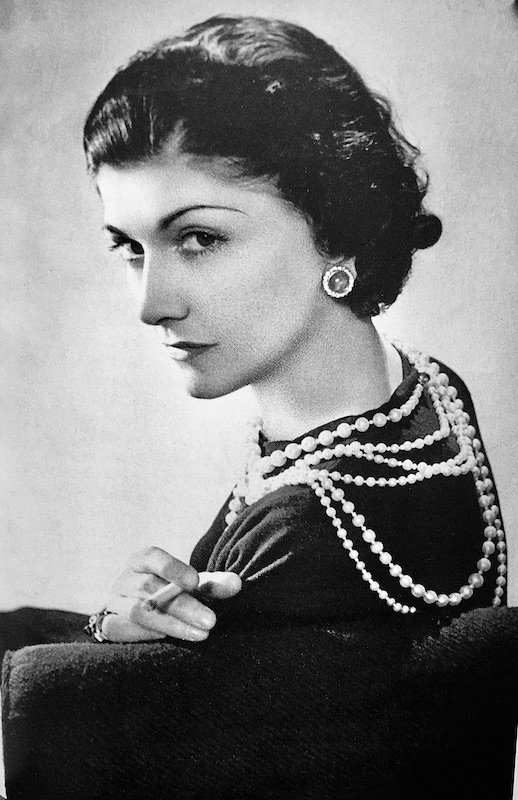
Image credit: Classic Chicago Magazine
Coco Chanel and pearls is a match made in heaven. Pearls have always been a signature element of Gabrielle Chanel's aesthetic, as beautifully captured in the book “Chanel: Collections and Creations”:
"Only pearls could highlight dark tanned skin, only pearls could bring out sparkling eyes and white teeth. Only pearls could capture the light, illuminate the face, embellish it like an invisible layer of makeup."
Coco Chanel turned faux pearls from frowned-upon fakes to chic essentials at a time when imitation jewelry was seen as inferior. These iconic Chanel creations stand out with exceptional quality and a stunning, glossy finish that rivals even the real thing!

Images credit: British Vogue, Town & Country, and Glamour
Today, Chanel pearls remain a staple in the fashion world, offering an array of options from long to short strands and from bold to subtle designs, all equally stylish and adaptable to individual tastes.
Why all the hype about Coco Chanel’s pearls? Simply put: stunning aesthetics and superior craftsmanship. Each Chanel pearl necklace is a masterclass in craftsmanship, featuring premium freshwater pearls paired with elegant gold chains for timeless sophistication.
They hit the sweet spot between classic elegance and modern style—bold enough to stand out but subtle enough for everyday wear, embracing Coco’s iconic motto, "Pearls are perfect for every occasion.”
The Chanel-Duke Legendary Alliance
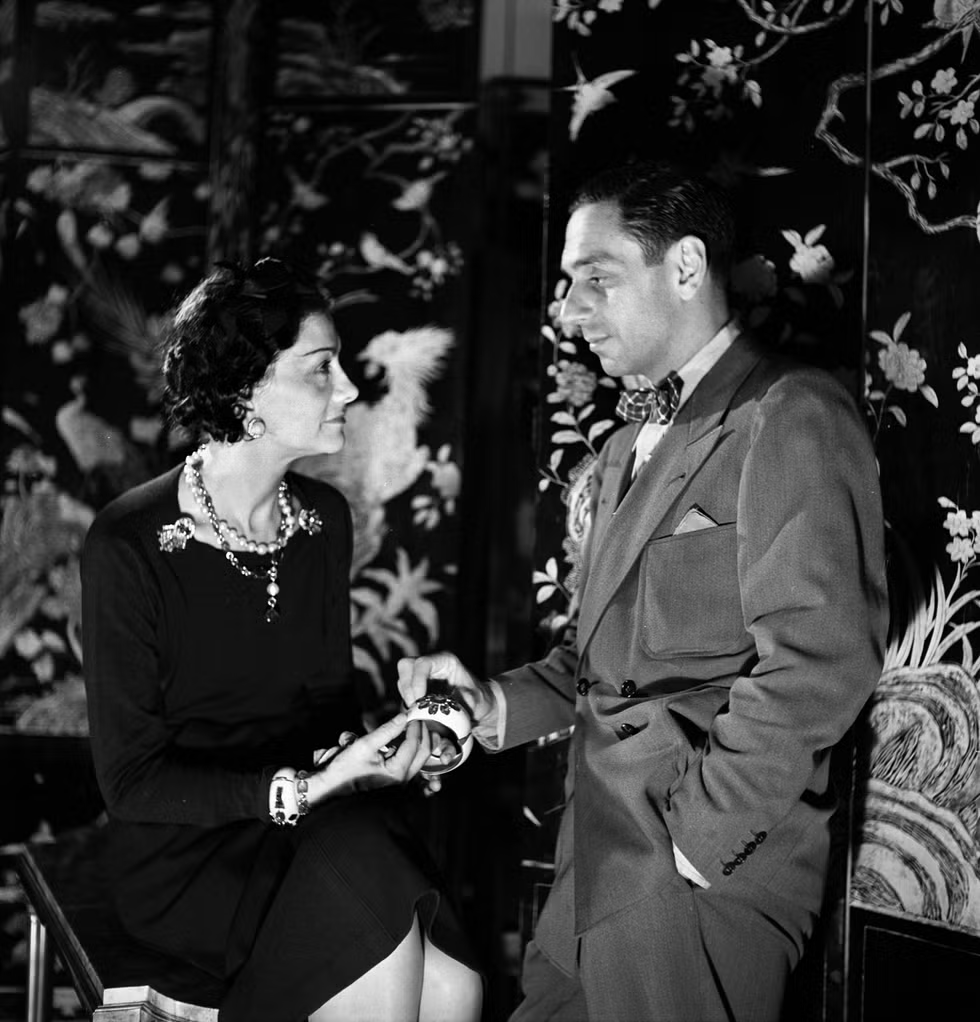
Image credit: Town & Country
Chanel drew inspiration from her broad network of artistic friends, among whom Duke Fulco di Verdura, a Sicilian aristocrat and globetrotting socialite, was particularly influential. Initially joining Chanel as a textile designer, Verdura's distinctive artistic vision was quickly recognized by Coco Chanel, leading to his promotion as the head designer of Chanel jewelry.
Verdura’s partnership with Gabrielle Chanel redefined his perspective on jewelry design. Their artistic chemistry led to groundbreaking creations that blended sophistication with raw, primitive beauty—unfazed by conventional fashion rules.
The legendary dou shared a fascination with Baroque aesthetics and co-created the legendary Maltese Cross, a design now synonymous with Chanel's jewelry line.
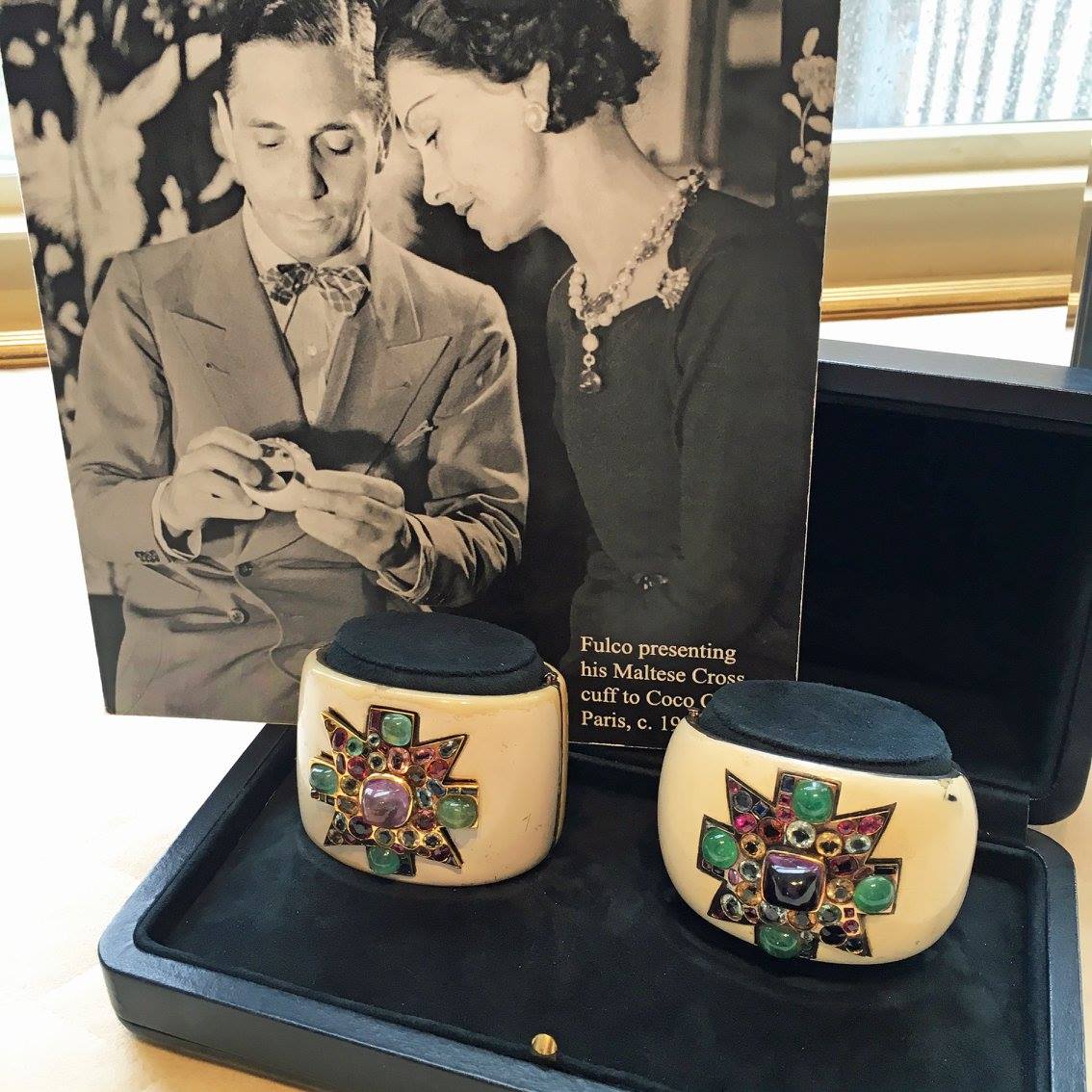
Image credit: Verdura
The Maltese Cross Cuffs remain as iconic today as they were on Coco Chanel’s wrists—striking white enamel cuffs adorned with magnificent cabochons and semi-precious stones set in a gold cross, reflecting Verdura's unique interpretation of the Maltese Cross.
Inspired by his Mediterranean heritage, Verdura’s Maltese Cross motif must have struck a familiar chord with Coco Chanel, evoking memories of her convent childhood where the symbol was ever-present.
Chanel’s famous crosses later inspired creations in rock crystal by Robert Goossens and colored glass by Maison Gripoix. Their organic, stained-glass-like surfaces reflected the imperfect beauty Chanel remembered from the cobbled patterns of the nunnery where she was raised.
How Did a "Dressmaker" Revolutionize High Jewelry?
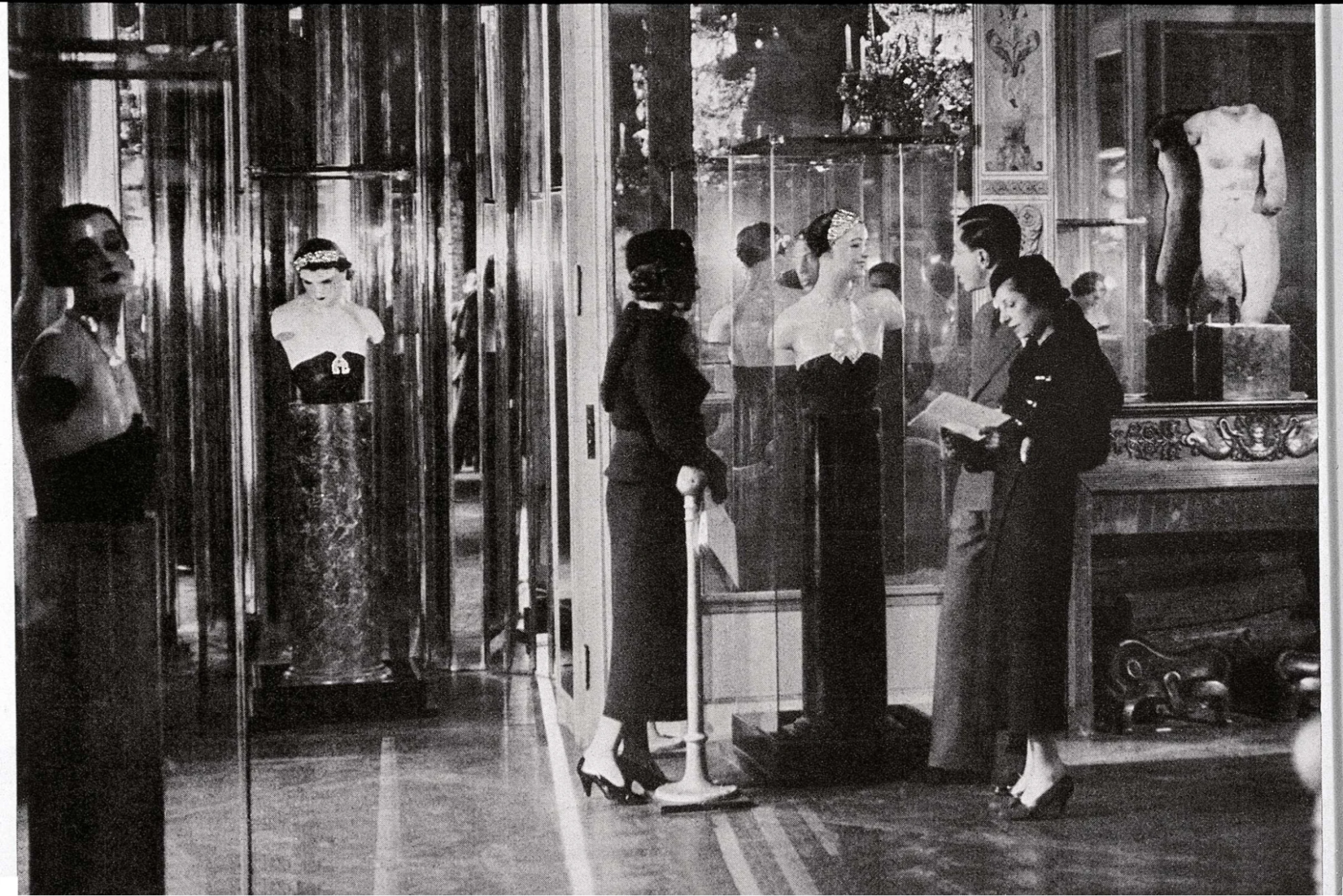
Image credit: Chanel
Mademoiselle Gabrielle Chanel once ventured into fine jewelry with her Bijoux de Diamants collection in 1932. At a time when the diamond market was on the brink of collapsing, industry leaders enlisted Chanel to design a line that might reignite consumer interest.
The Bijoux de Diamants collection was a true expression of Coco Chanel's unique creative vision, blending her personal style with innovative ideas, which was rarely seen then. She pioneered the concept of a themed High Jewellery collection, presenting all pieces together in one location—an approach radically different from the era's norm.
Jewelers typically showcased their works separately, but Chanel applied the cohesive, unified principles of Haute Couture to High Jewellery (rebellious as always!).

Images credit: Chanel
The Bijoux de Diamants collection was much more than its name implied, showcasing an exceptionally striking range of designs. Gabrielle Chanel envisioned and crafted about 50 pieces that shimmered with white and yellow diamonds set against the lush backdrops of platinum and yellow gold, intended to capture and reflect light spectacularly during the day and at night.
Notably, 22 of these pieces depicted celestial themes with stars, comets, moons, and suns. She also created 17 pieces featuring optical illusions of flowing ribbons, swaying fringes, and delicate feathers, alongside eight pieces celebrating the graphic simplicity of spirals, circles, squares, and crosses.
Chanel expressed her artistic intention clearly:
"I seek out the motifs that best showcase the brilliance of diamonds—the star, the cross, the fall of graduated stones and large sunburst cabochons"
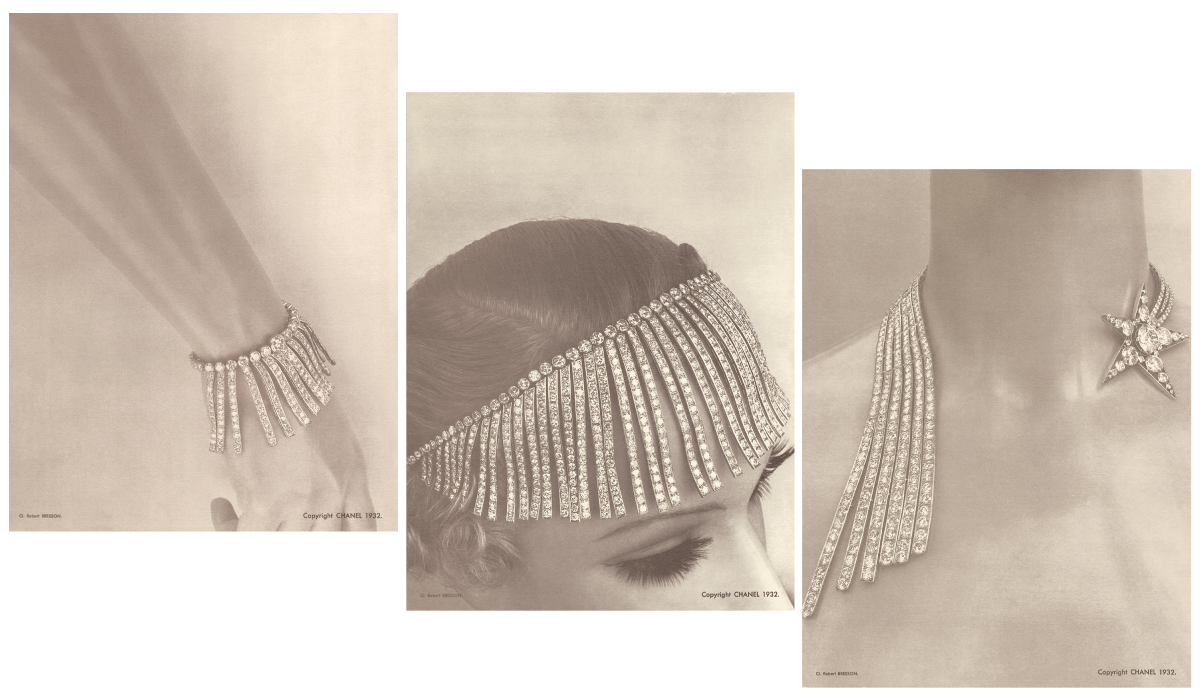
Images credit: Chanel
Mademoiselle Chanel infused her jewelry designs with the same modernist principles that she applied to her clothing, viewing jewelry as adornment and a way to interact with the body.
The Bijoux de Diamants collection, historically the first of its kind in High Jewellery, was primarily designed with the contemporary woman in mind—active, engaged, and always in motion. Chanel crafted these pieces clasp-free, allowing for freedom of movement and a seamless blend with the wearer’s daily activities.
Chanel's designs, however, fell flat.
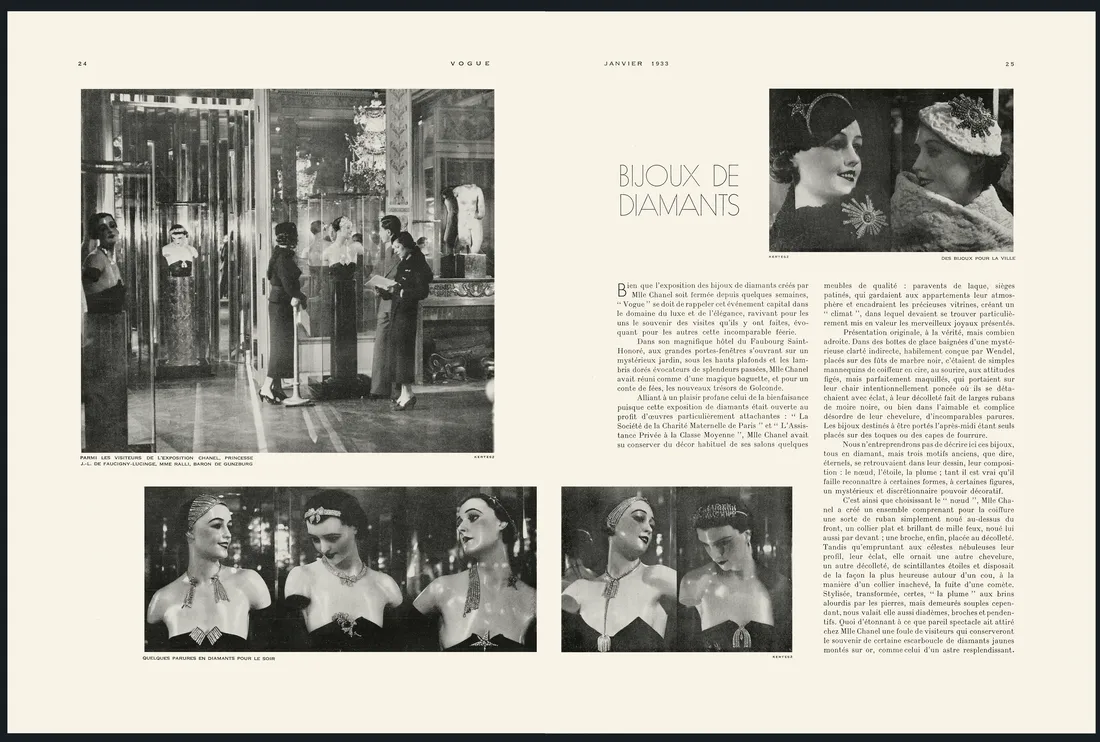
Image credit: British Vogue
The unveiling of the Bijoux de Diamants collection, described with fantastical figures like "8 billion sparkles and 93 million stones," stirred up a whirlwind of rumors and scandal. The novelty and authenticity of the collection spurred the press to report these staggering figures, which, in turn, fueled public intrigue.
Parisian jewelers, irked by the choice of a "dressmaker" for such a prestigious task, even tried to thwart her efforts. This choice provoked significant unease around Place Vendôme, escalating into what was soon dubbed the “Chanel Affair.”
The entire jewelry industry seemed to unite against Chanel back then, but it wasn't until 60 years after Chanel died in 1971 that her namesake brand would launch another fine jewelry line in 1993.
Chanel’s Post-War Revival

Image credit: Chanel
In 1939, as World War II began to unfold, Coco Chanel decided to close her Paris boutique, marking a pause in her fashion operations during the turbulent years. Chanel reopened her iconic shop in 1954 at Rue Cambon when peace was restored.
This time, Coco Chanel ensured every piece of clothing she designed was perfectly paired with costume jewelry. To bring her vision to life, she turned to French jeweler Robert Goossens (1927-2016), a master craftsman famous for designing pieces for legendary fashion houses like Balenciaga, Rochas, and Schiaparelli.
Goossens, who shared Chanel’s passion for blending faux and precious stones, added an exciting new energy to her iconic collections. His tenure at Chanel continued under the direction of Karl Lagerfeld, where he became instrumental in evolving some of Chanel’s most iconic motifs. He reimagined the signature double C logo, now synonymous with the brand, and other enduring symbols like the Maltese Cross and the camellia flower.
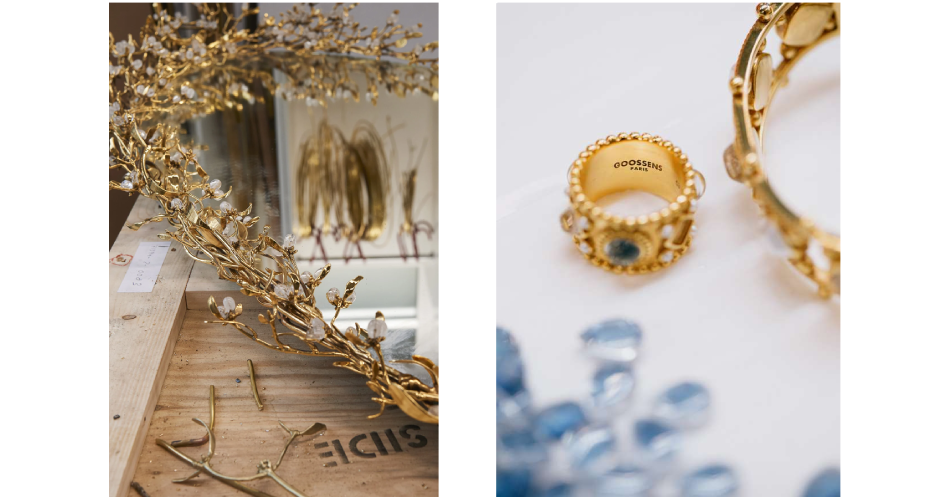
Images credit: Chanel
Upon meeting Robert Goossens in 1953, Gabrielle Chanel was astonished by his baroque-style jewelry that drew inspiration from ancient Byzantine and Egyptian art. His work, which also included influences from Barbarian, Visigoth, and Etruscan jewelry, elicited a delighted response from Chanel, who immediately exclaimed, "They are magnificent - if people ask where they came from we will say the excavations at rue Cambon!"
Even after Coco Chanel passed away, Robert Goossens remained a vital creative force for the brand, keeping her visionary spirit alive through his exquisite jewelry designs.
Today, collectors eagerly seek out the jewelry created during Robert Goossens’ time with Chanel, valuing these masterpieces for their historical meaning, enduring elegance, and representation of a groundbreaking chapter in the brand’s journey.
Jewelry for All, Exclusivity for None
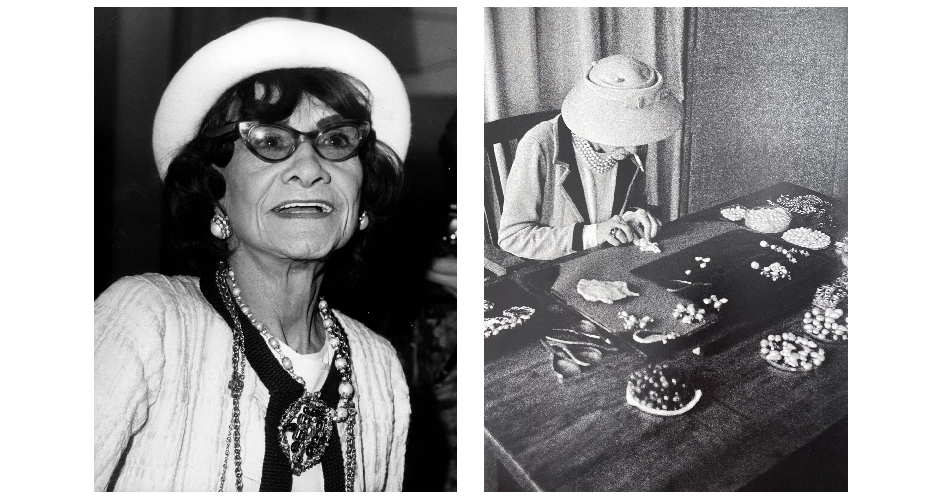
Images credit: Classic Chicago Magazine and Pinterest
When Coco Chanel first ventured into the costume jewelry scene in 1924, she did so with a refreshing perspective:
"I started creating costume jewelry because I felt that it was refreshingly free of arrogance, during a period that tended towards ostentatious displays of luxury"
Her designs continue to enchant, adored for their aesthetic appeal and how they capture Chanel's rebellious, free spirit. However, with the relatively high price tags attached to Coco Chanel's new creations, there's a growing trend towards acquiring second-hand (pre-loved) jewelry.
Celebrities like Sarah Jessica Parker, Macklemore, and Janelle Monáe, alongside numerous jewelry enthusiasts, have all embraced this sustainable shopping practice. Statistics reveal the impact of this trend: thrift store shoppers typically save around $1,760 annually, and a whopping 93% of Americans have purchased secondhand items online.
Not sure if second-hand shopping is your thing? Start with Chanel's famous jewelry pieces, made only from the finest materials—they retain their iconic charm regardless of how much time has passed, echoing the enduring spirit of their creator.
Discover these stunning pieces on the luxe-exclusive platform ZenLuxe, where they're available for just a fraction of their original cost. From iconic pearl necklaces and Chanel logo earrings to the Chanel Premiere watch, camellia flower brooch, and every Chanel creation you've dreamt of but couldn't fit into your budget.
Now, you can access a virtually endless array of brand-new-looking preloved jewelry, making it easier than ever to start your sparkling Chanel collection with precious pieces that shine like new.
It does sound like a steal—and it truly is!
About The Writer
Meet Mariam - a fashion writer with a geek-level enthusiasm for all things vogue and glamor. For her, the most therapeutic aspect of fashion goes beyond simply shopping for the latest styles that appear in stores—it’s fully experiencing this glamorous world from the little details to the big moments (because who doesn’t enjoy flipping through a glossy fashion magazine?).


